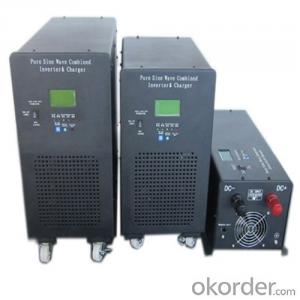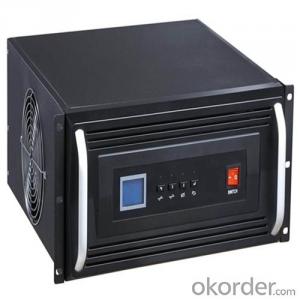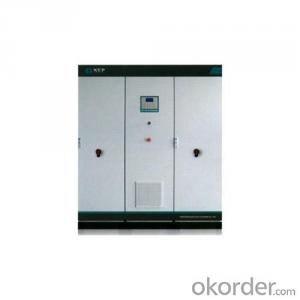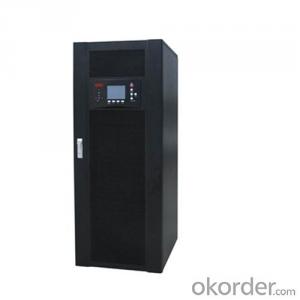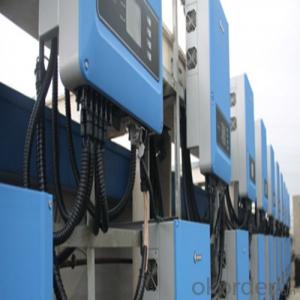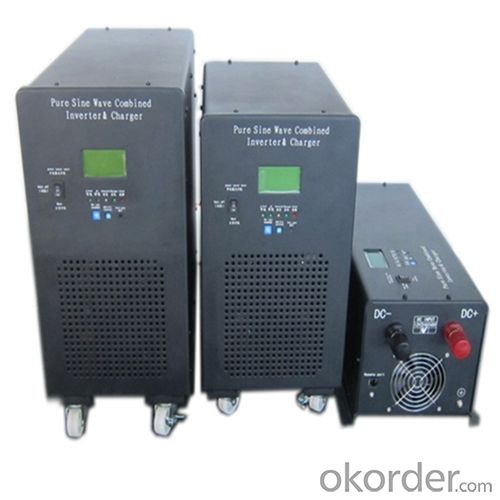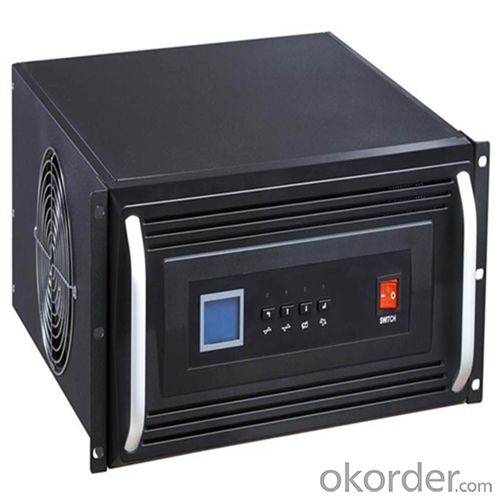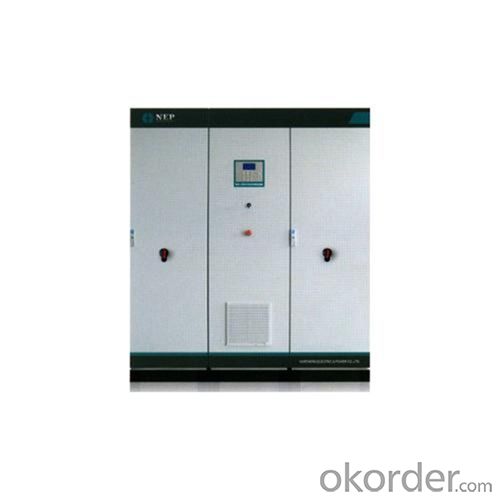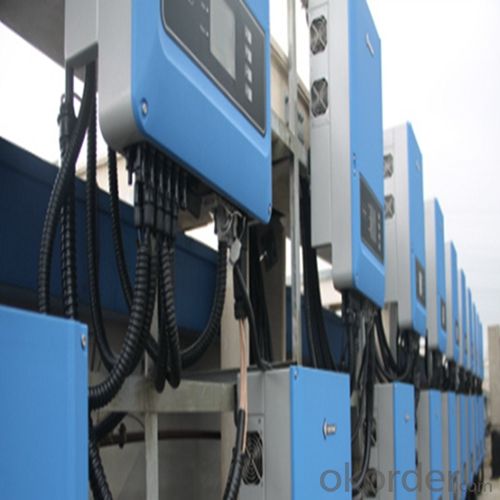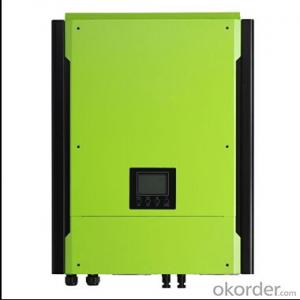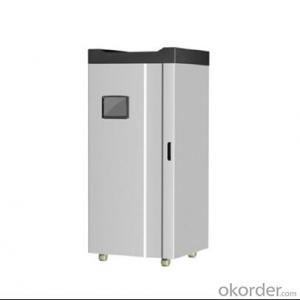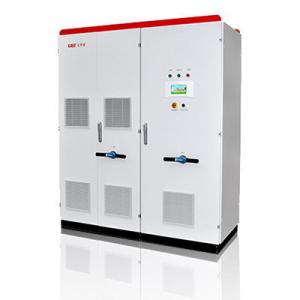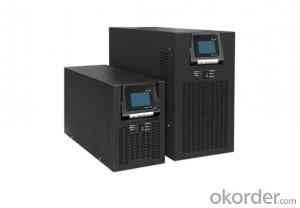Solar Inverter Kit - Approved MPPT Solar Charge Pure Sine Wave Inverter
- Loading Port:
- Shanghai
- Payment Terms:
- TT OR LC
- Min Order Qty:
- 5 pc
- Supply Capability:
- 3000 pc/month
OKorder Service Pledge
OKorder Financial Service
You Might Also Like
Performance Characteristics
· 1. Suitable for all electrical equipments
· 2. Large LCD display for more detailed content
· 3. CPU controlled; fast transfer time
· 4. Intelligent battery management, prolonging the service life of the battery
· 5. Complete protection function, high reliability
· 6. Can provide high current charge
· 7. Can match different types of batteries
· 8. Disassembled LCD box which can make the operation in a distance of 15 meters
Product introduction
EP series is sine wave low frequency inverter, which is specifically designed for home appliances. It is equipped with a big LCD screen so all information is displayed in detail, which makes it more convenient to use. Charging current of the inverter is adjustable from 5A to 45A and you can also select different charging voltage to charge different types of batteries so batteries are under great protection.
Our Service
Samples
Samples are Available for Testing and Market Test.
Warranty
We provides warranty against defects in materials and workmanship for its Uninterruptible power supply, Power inverter/chargers including inverter12v 24v 48V, Solar charge controllers (“Product”).
OEM Service
OEM service is strictly based on the ISO9001 ISO14001 quality assurance system. The TOP involves the effective teamwork of departments from Sales, R&D, and Engineering, purchasing, production & QA, assuring a high quality product and prompt delivery for customers. The standardization of our quality system and the quality stability has earned us the trust of our customers for 12 years.
We have 10 sets of automatic insertion equipments, ICT PCB testing equipments, ATE automatic testing center and aging workshop for all products. Monthly output of UPS series exceeds 200,000. We have been offering OEM service for over 12 years.
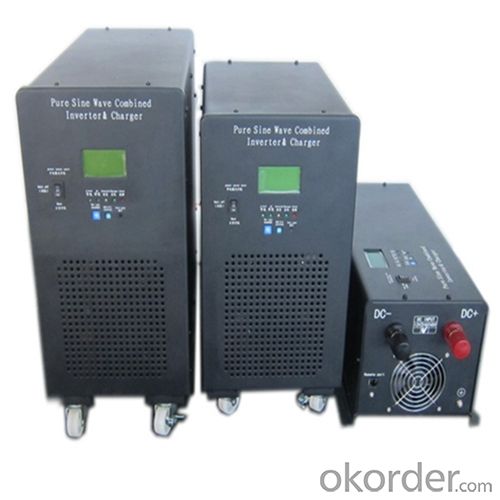
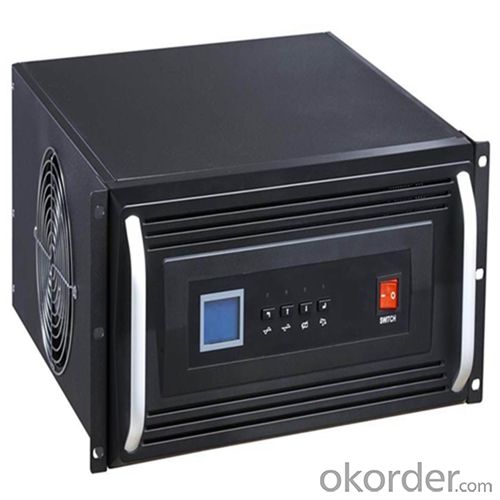
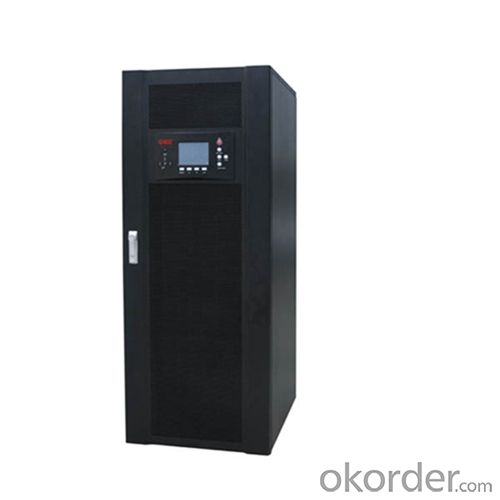
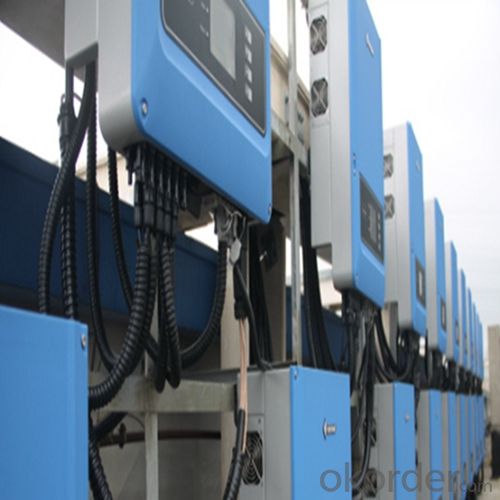
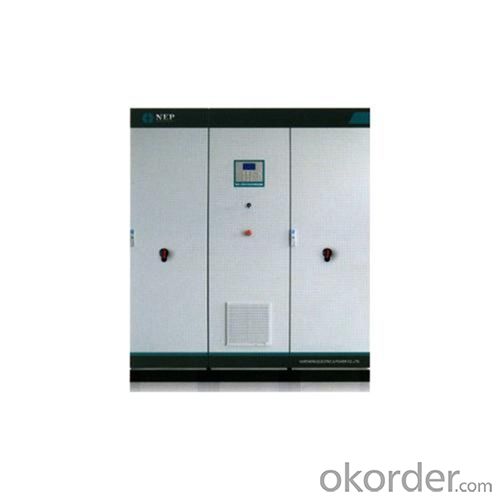
Specifications
Input | |
Input Voltage Range | 182-265VAC |
Output | |
Input Voltage Range | Batt.Mode:50±0.3Hz Mode:48-54Hz(50Hz) or 58-64Hz,Same as AC |
Output Wave Form | Sine Wave (Batt,mode) |
Transfer Time | 10ms(Typical) |
FAQ:
Q: Do you have the CE, TUV, UL Certification?
A: We’ve already passed all the tests, and any certificate is available.
Q: Have you ever sold your products to companies in my country?
A: Of course, we have customers in all general PV markets, but I think we should expand our market share along with the market growth.
Q: When did your company set up? You are a new company, how can I believe your quality?
A: We entered into Solar PV industry in 2005, now we have several plants in manufacturing of a-Si and c-Si panels, and our capacity is 220MW per year. Till now we have already passed all the tests by authorized laboratories, e.g. TUV, CE, UL.
Q: Can you help us install the module if we cooperate with you?
A: We haven’t entered into installation sector, but we have the plan in near future.
Q: How do you pack your products?
A: We have rich experience on how to pack the panels to make sure the safety on shipment when it arrives at the destination.
Q: Can you do OEM for us?
A: Yes, we can.
Q: Can we visit your factory?
A: Surely, I will arrange the trip basing on your business schedule.
- Q: How does a solar inverter handle variations in battery charge levels?
- A solar inverter manages variations in battery charge levels by monitoring the voltage and state of charge of the batteries. It adjusts the flow of electricity from the solar panels to the batteries accordingly, ensuring that the batteries are charged optimally without overcharging or undercharging. This helps maintain a stable and efficient energy storage system.
- Q: Can a solar inverter be used with a solar-powered educational system?
- Yes, a solar inverter can be used with a solar-powered educational system. A solar inverter is a device that converts the direct current (DC) generated by solar panels into alternating current (AC) that can be used to power various electrical devices. In the case of a solar-powered educational system, the solar inverter would play a crucial role in converting the DC power generated by the solar panels into usable AC power for running electronic equipment such as computers, projectors, and other educational tools.
- Q: What is the role of a solar inverter in preventing system failures?
- The role of a solar inverter in preventing system failures is to convert the direct current (DC) electricity generated by solar panels into alternating current (AC) electricity that can be used to power homes and businesses. In addition to this conversion, solar inverters also play a crucial role in ensuring the stability and efficiency of the entire solar power system. They monitor and regulate the voltage and frequency of the electricity being generated, protecting the system from overvoltage, undervoltage, and other electrical abnormalities that can potentially lead to system failures. By constantly monitoring and adjusting the electrical output, solar inverters help maintain the health and reliability of the solar power system, ultimately preventing potential failures and maximizing the overall performance.
- Q: What are the communication protocols used in solar inverters?
- The communication protocols commonly used in solar inverters are Modbus, SunSpec, and DNP3. These protocols enable the inverters to communicate with other devices and systems, such as monitoring software, energy management systems, and smart grids, to exchange data and control commands.
- Q: What is the role of transformerless design in a solar inverter?
- The role of transformerless design in a solar inverter is to eliminate the need for a bulky and heavy transformer, resulting in a smaller, lighter, and more efficient inverter. By removing the transformer, the design reduces energy losses, improves power conversion efficiency, and lowers manufacturing and installation costs. Additionally, transformerless inverters allow for increased flexibility in system design and make it easier to integrate with other renewable energy sources and smart grid technology.
- Q: What are the signs of a faulty solar inverter?
- Some signs of a faulty solar inverter include a complete loss of power generation, inconsistent or fluctuating power output, error messages or fault codes displayed on the inverter, unusual noises or excessive heat coming from the inverter, and a lack of communication or connection with monitoring systems.
- Q: What is the role of a solar inverter in power quality management?
- The role of a solar inverter in power quality management is to convert the direct current (DC) generated by solar panels into alternating current (AC) suitable for use in the electrical grid. In addition to this primary function, solar inverters also play a crucial role in managing and maintaining power quality by ensuring a stable voltage and frequency output, reducing harmonics and reactive power, and providing grid support functions such as voltage regulation and power factor correction.
- Q: Can a solar inverter be used in conjunction with a generator?
- Yes, a solar inverter can be used in conjunction with a generator. In fact, it is a common setup in hybrid systems where the solar panels generate electricity during the day, and the generator provides power during periods of low solar production or high energy demand. The solar inverter converts the DC power from the solar panels and the AC power from the generator into a usable form for the connected appliances and the grid. This combination allows for a more reliable and efficient power supply.
- Q: Can a solar inverter be used with different types of communication protocols?
- Yes, a solar inverter can be used with different types of communication protocols. Modern solar inverters are designed to be compatible with various communication protocols such as Wi-Fi, Ethernet, Modbus, and RS485. This allows for seamless integration and monitoring of the solar inverter with different types of monitoring systems, smart home devices, or energy management systems.
- Q: Can a solar inverter be used in remote areas?
- Yes, a solar inverter can be used in remote areas. Solar inverters are designed to convert the direct current (DC) produced by solar panels into alternating current (AC) that can be used to power electrical devices. As long as there is access to sunlight, solar panels can generate electricity, making solar inverters suitable for remote areas that may not have access to the traditional power grid.
Send your message to us
Solar Inverter Kit - Approved MPPT Solar Charge Pure Sine Wave Inverter
- Loading Port:
- Shanghai
- Payment Terms:
- TT OR LC
- Min Order Qty:
- 5 pc
- Supply Capability:
- 3000 pc/month
OKorder Service Pledge
OKorder Financial Service
Similar products
Hot products
Hot Searches
Related keywords
